-
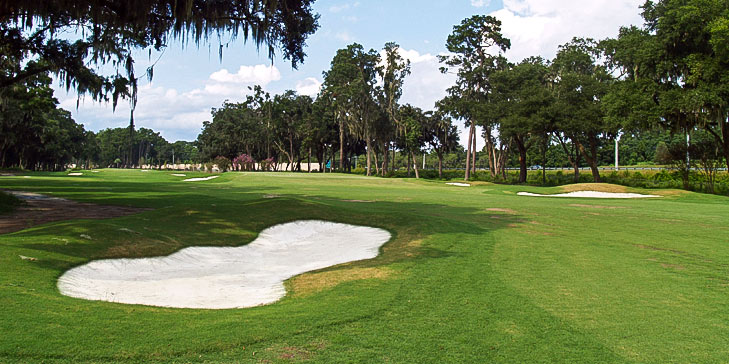
The opening hole at Bacon Park following Mandell’s restoration
-
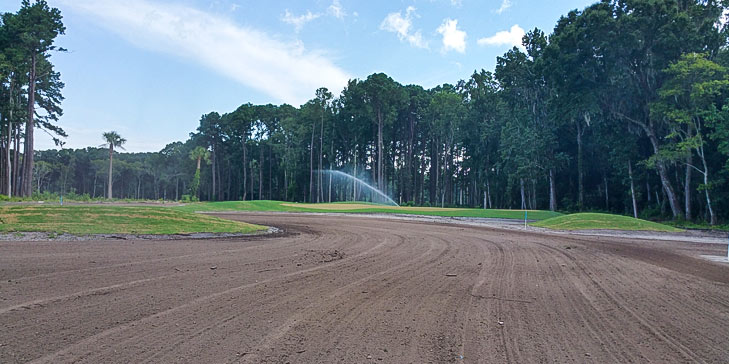
The fifteenth hole during the grow in period
-
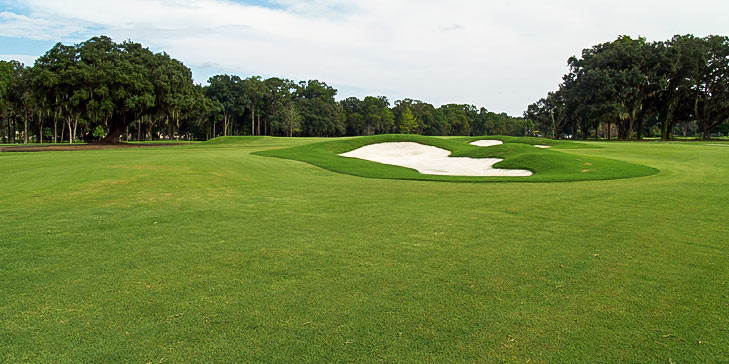
The course’s restored eighth hole
-
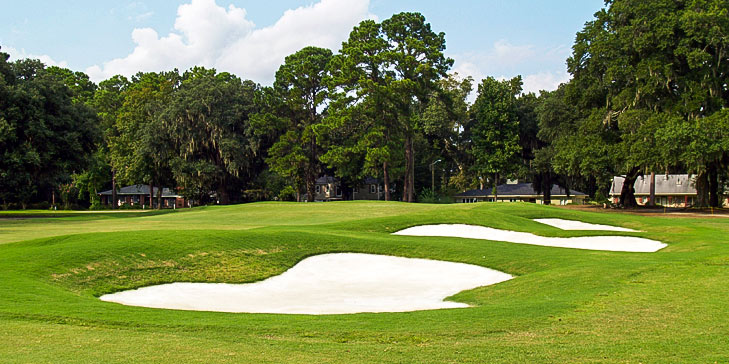
The course is set to reopen for play on the 10 October
-
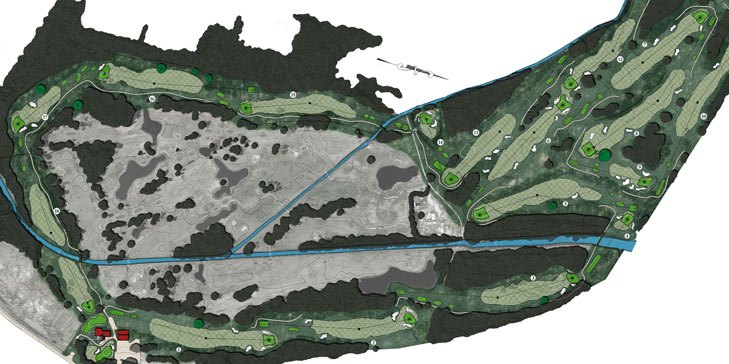
Mandell’s rendering drew on Donald Ross’ original design and aerial photography
With the golf course at Bacon Park in Savannah, Georgia set to reopen for play next month, GCA caught up with architect Richard Mandell to find out more about the project.
North Carolina-based Mandell was first contacted by O.C. Welch of O.C. Welch Golf Management back in January 2014, who had just taken over the management of the Bacon Park having grown up playing the course.
Mandell was selected from a long list of architects to advise on the work, and began working alongside Welch and his team with the aim of determining ‘the best course for the future at Bacon Park’.
“Back in 1925, Donald Ross routed four golf courses for the City of Savannah,” Mandell explained. “Only two of the courses were built, one of which was closed in the forties. In the mid-eighties, a third nine was built and the Ross holes were broken up and split among three nines. Six of the Ross greens complexes were re-designed at the time.”
Mandell says that all 27 holes had deteriorated ‘to the point of no return’, something that triggered Welch’s determination to bring the course back up to scratch.
“He (Welch) committed time and resources over a five-year period to restore Bacon Park to its former glory,” said Mandell. “For me, it was clear that a restoration of the original Ross eighteen was a no-brainer and Mr. Welch was of the same opinion. He had less than fond memories of the newer nine holes and even less feeling toward the changed Ross holes. Those holes were completely changed with ponds added to the original green locations and the greens shifted.”
Mandell found the original Ross masterplan and individual hole drawings, as well as aerial photographs from the 1950s and 1970s.
“We set about to restore the original Ross 18 at Bacon Park,” Mandell said. “One thing I discovered in my research is that the masterplan had more refined detail than the hole plans, which is a bit unusual. Looking closer at the masterplan, only the two courses which were built had any detail in terms of hazards, tee and green shapes, and mounding for example. The other two courses were strictly centre lines from one generic tee box to a generic green.”
Mandell explained that while walking the course, it became apparent that Ross had been making design decisions in the field after the holes were roughed in. He explained that things fit perfectly in the ground, and that the master plan was an ‘as-built’ plan.
“My efforts at restoration were a composite of the two sets of drawings as well as reference from the aerials,” said Mandell. “My task was to create the masterplan based on the information I had gathered and Mr. Welch’s wishes, then to provide detailed construction drawings and bid documents for the project and provide construction administration throughout. I made weekly trips to Bacon Park and worked with my shapers to implement as much of the Ross design as possible.”
As well as the architectural aspects, Mandell also had to ensure the project remained within the US$2,000,000 budget.
“We lowered many tee boxes to within just 18 inches above grade and utilised that material elsewhere, along with material from a bunch of free-form tee boxes which weren’t needed and other artificial features,” he said. “We filled all those ponds and created enough surface movement to improve drainage. From there, it was value engineering of realistic quantities throughout the construction process.”
The project was something of a fast-track restoration, with the 18 restored holes set to open for play on 10 October.
“Golfers will be treated to a truly restored Donald Ross golf course at Bacon Park that is quite accurately defined as low-profile and affordably constructed by limiting excess,” Mandell said. “Between existing topography and Ross’s notes, I was able to accurately elevate the greens, which are not what most people would think of when Ross greens are the subject. These greens vary in elevation above grade from just 18 inches or so to no more than four feet above grade. The stereotypical Ross greens seem to all be built up four to five feet in general.”
Mandell added that some of the greens are quite radical, and listed the sixth and seventh greens as good examples.
“The sixth green is literally the shape of Mickey Mouse’s head, ears and all,” he said. “A prominent spine bisects the green. The seventh hole is a rollercoaster with three levels and two swales bisecting it from east to west. All of the greens are much larger in size than what was actually built.”
Mandell added that he believes the restoration to be very authentic, and that a number of bunkers on the front nine have been placed exactly where Ross placed them originally.
“One interesting testament to Ross’ smarts is that on the last four holes of the golf course, he limits his use of sand to a total of five bunkers,” he explained. “Instead of additional bunkers, in their place he specified large mounds throughout the back nine. He recognised the low-lying nature of those holes and that bunkers may not drain there. The fifteenth hole has four large mounds throughout the fairway with no sand. The last hole has a bold trio of mounds in the corner of the second landing area which replace where most architects would venture sand as the hazard. We went with the Ross mounds. I think some of these holes will have golfers scratching their heads at first, but quickly come to appreciate the detail and the idea that their Ross course is just a little special than the standard Ross fare.”
Mandell confirmed that the club is now looking to redesign its practice facilities and driving range, and that as of yet, O.C. Welch is yet to determine the fate of the third nine holes at Bacon Park.